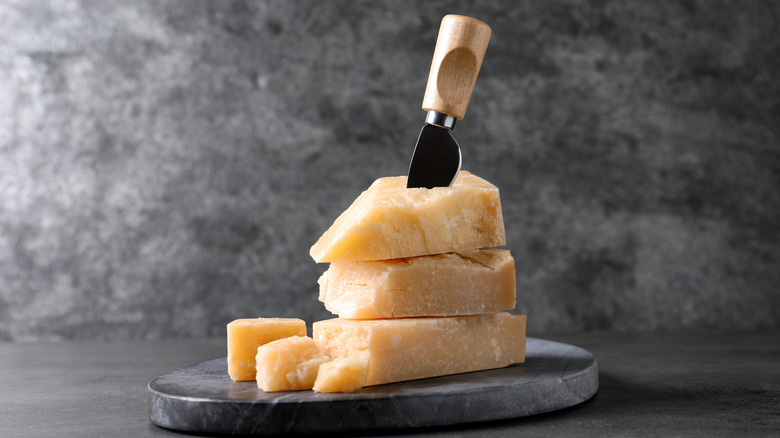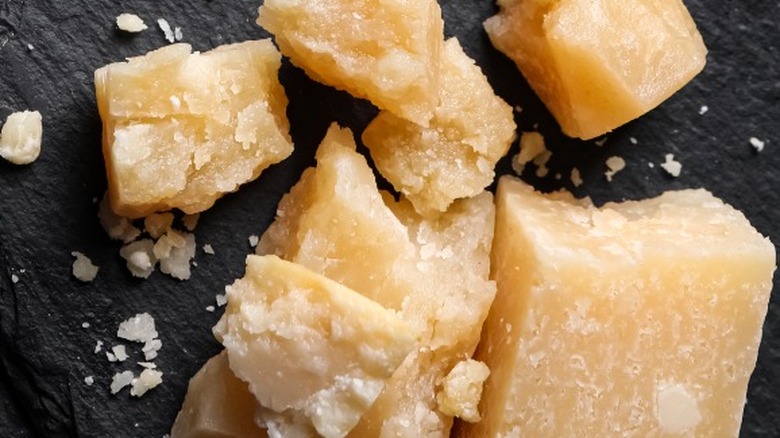What Are The Crystals In Parmigiano-Reggiano?
Parmigiano-Reggiano isn't known as the King of Cheeses for no reason. Grated over pasta, shaved into salads, or simply eaten on its own, the salty, yet sweet cheese only gets better with age. Intensifying in color and flavor as the wheel matures, Parmigiano also becomes increasingly crumbly and granular, evident by the overwhelming presence of crunchy crystals. But, what exactly are those sparkling specks, and how did they get there?
In a world of soft, stringy, and semi-hard cheese, Parmigiano offers us something different: crunch. As its crystals crack between our teeth, this granular characteristic also provides a unique sensory experience that goes beyond taste. The audible crispness that we hear can even heighten our overall tasting experience, and help shape our opinion on its quality. That said, before we delight our ears, we must first please the peepers.
Parmigiano crystals can be best observed by cutting into the cheese with a coltello a mandorla. Often fairly small, they appear as white deposits dotted along the surface on the cheese. Crunchy and gritty, there's a common misconception that these crystals are just flecks of salt. However, that's actually not the case at all.
As proteins in the cheese break down, crystals form
Certain cheeses inevitably contain crystals. While some might contain calcium lactate crystals, the same isn't entirely true of Parmigiano. When it comes to the dazzling crunchy bits scattered inside a wheel of Parm, the culprit lies in an amino acid called tyrosine. Triggered by a series of chemical reactions, these little white gems are actually the result of a breakdown of proteins.
Despite the fact that milk fats and proteins like the amino-rich casein bind together to form curds in the cheesemaking process, protein chains eventually deteriorate over time. Consequently, as these proteins unravel and release tyrosine molecules, they start colliding with one another, ultimately resulting in crystallization.
Although these crunchy deposits might seem salty or full of flavor, the truth is that they are actually quite flavorless. Instead, their presence simply indicates complexity as it demonstrates that the cheese has had time to mature and develop more nuanced flavors and aromas. Get your hands on a wedge of crystal-covered Parmigiano and taste for yourself!

